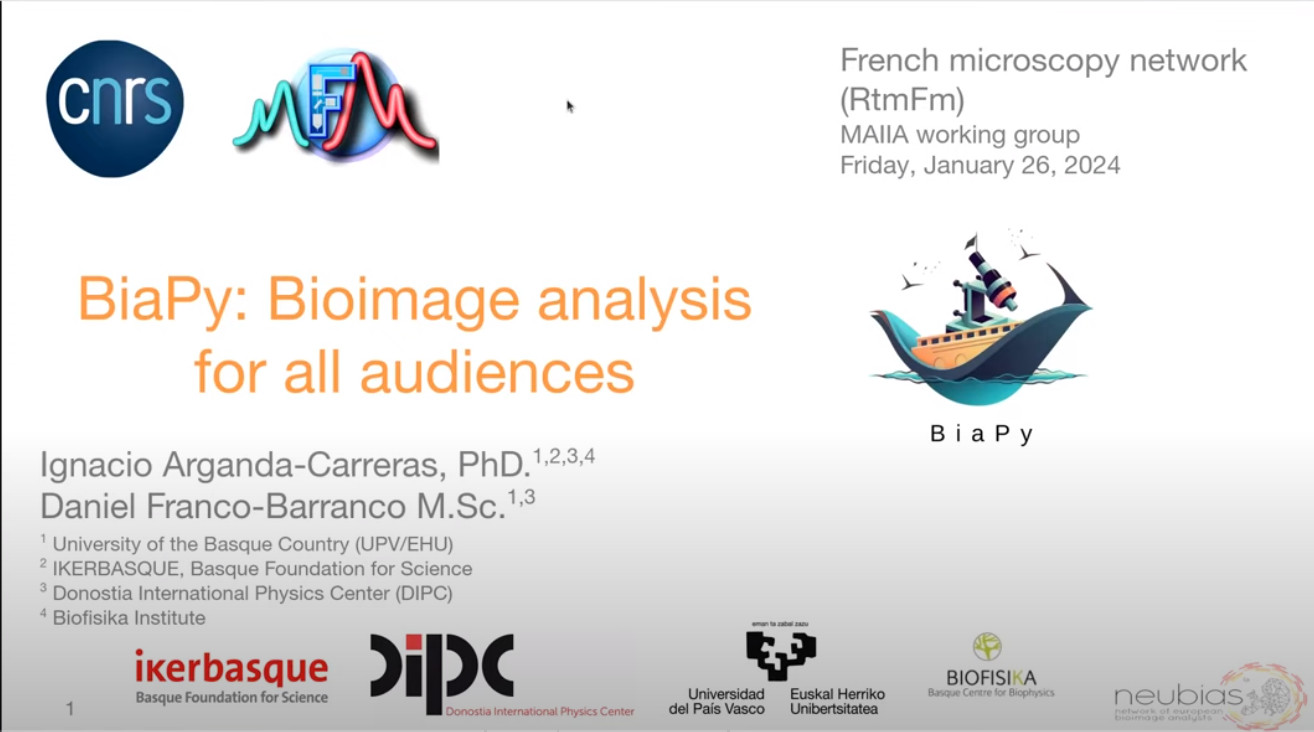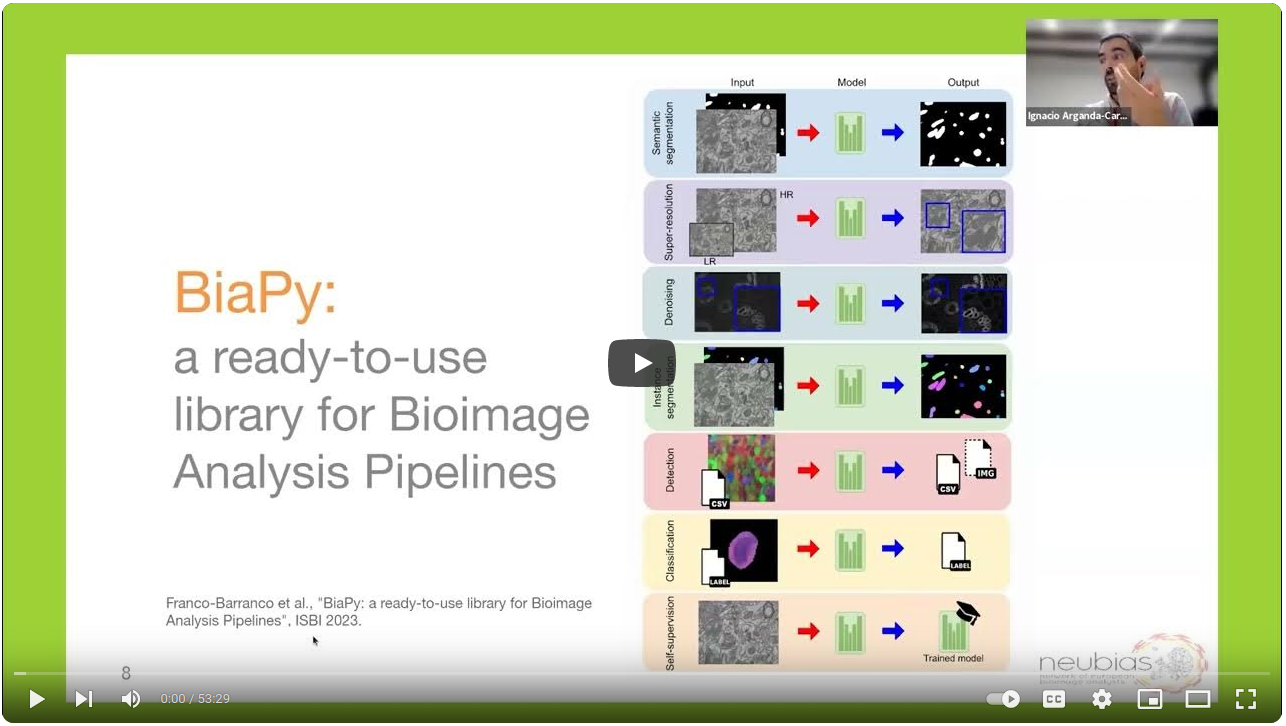BiaPy: Bioimage analysis pipelines in Python
BiaPy is an open source ready-to-use all-in-one library that provides deep-learning workflows for a large variety of bioimage analysis tasks, including 2D and 3D semantic segmentation, instance segmentation, object detection, image denoising, single image super-resolution, self-supervised learning and image classification.
BiaPy is a versatile platform designed to accommodate both proficient computer scientists and users less experienced in programming. It offers diverse and user-friendly access points to our workflows.
This repository is actively under development by the Biomedical Computer Vision group at the University of the Basque Country and the Donostia International Physics Center.
Find a comprehensive overview of BiaPy and its functionality in the following videos:

|

|
Get started
Workflow description
Tutorials
Citation
Franco-Barranco, Daniel, et al. "BiaPy: a ready-to-use library for Bioimage Analysis
Pipelines." 2023 IEEE 20th International Symposium on Biomedical Imaging (ISBI).
IEEE, 2023.
Applications using BiaPy
López-Cano, Daniel, et al. "Characterizing structure formation through instance
segmentation." arXiv preprint arXiv:2311.12110 (2023).
Franco-Barranco, Daniel, et al. "Current Progress and Challenges in Large-scale 3D
Mitochondria Instance Segmentation." IEEE transactions on medical imaging (2023).
Backová, Lenka, et al. "Modeling Wound Healing Using Vector Quantized Variational
Autoencoders and Transformers." 2023 IEEE 20th International Symposium on Biomedical
Imaging (ISBI). IEEE, 2023.
Andres-San Roman, Jesus A., et al. "CartoCell, a high-content pipeline for 3D image
analysis, unveils cell morphology patterns in epithelia." Cell Reports Methods 3.10 (2023).
Franco-Barranco, Daniel, et al. "Deep learning based domain adaptation for mitochondria
segmentation on EM volumes." Computer Methods and Programs in Biomedicine 222 (2022):
106949.
Franco-Barranco, Daniel, Arrate Muñoz-Barrutia, and Ignacio Arganda-Carreras. "Stable
deep neural network architectures for mitochondria segmentation on electron microscopy
volumes." Neuroinformatics 20.2 (2022): 437-450.
Wei, Donglai, et al. "Mitoem dataset: Large-scale 3d mitochondria instance segmentation
from em images." International Conference on Medical Image Computing and Computer-Assisted
Intervention. Cham: Springer International Publishing, 2020.